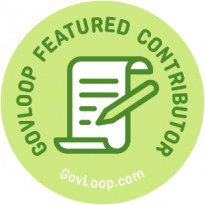Even in today’s fast-evolving workforce, government employees and public service professionals are working daily to advance a shared mission while preparing for what’s ahead. That future — across both public institutions and private organizations — is being shaped by technological transformation and evolving ways of working.

Team leaders are uniquely positioned to cultivate a workforce that actively embraces innovation and is well-prepared for the future with the skills they need to help their organizations succeed. Investing in employee development isn’t just a nice-to-have — it’s a strategic opportunity for organizational success.
How Employee Development Benefits Teams
Investing in continuous employee learning and development not only yields substantial benefits for organizations, but also for individual team members. LinkedIn’s 2025 Workplace Learning Report reveals that business leaders at companies with mature career development initiatives had greater confidence in their organization’s ability to be profitable. According to the research, 84% of employees agree that learning adds purpose to their work. These findings underscore the critical role of continuous learning in enhancing team productivity, employee satisfaction, and overall organizational success.
A great place to start is focusing on developing your team’s transferable skills.
The Shift Toward Transferable Skills
By investing in developing their team’s transferable skills, people leaders can empower employees to respond effectively to emerging technologies, meet new goals, and contribute to collaborative efforts across teams. Roles in every industry are evolving rapidly, demanding skills that go beyond traditional job descriptions. Adaptability, critical thinking, digital fluency, and cross-functional communication are becoming the cornerstones of successful public-sector careers.
For instance, skill-building efforts that enhance the ability to craft clear, memorable messages — whether through emails, memos, or presentations — can equip teams to cut through the noise and make an impact with diverse stakeholders. Equally important are collaboration and interpersonal skills that help maintain strong team dynamics and empower professionals to work effectively in a multigenerational workforce.
Leaders, in particular, benefit from developing techniques to stay grounded and make sound decisions under pressure or when time is constrained. At the individual level, employees who are encouraged to build professional soft skills, such as resilience and emotional intelligence, contribute to more agile and cohesive teams.
But building these capabilities isn’t a one-time effort. It’s an ongoing strategy that champions curiosity and learning.
Creating a Culture of Continuous Learning
Establishing a culture of continuous learning means going beyond equipping team members with traditional training programs that simply check boxes. It means embedding professional development into daily operations.
Public-sector organizations can embed continuous learning in agile, practical ways, such as by leveraging online learning platforms to deliver personalized course paths and certifications. Embracing these strategies not only enhances individual competencies but also strengthens the organization’s capacity to adapt and thrive.
How to Measure and Refine Development Initiatives
To ensure the effectiveness of learning strategies, HR leaders should track the Return on Investment (ROI) of their organization’s learning initiatives. Useful measurement tools include data and analytics for workforce planning, such as internal mobility rates, employee engagement, training completion, and retention. Equally important is soliciting regular feedback from employees to understand what’s working and where support is needed.
Workforce Development as a Strategic Imperative
People leaders who invest in professional development demonstrate a clear commitment to continuous learning and excellence. By equipping their teams with transferable skills, fostering a culture of growth, and evaluating the outcomes of these initiatives, they’ll be empowering the workforce to identify and embrace opportunities, whatever the future brings.
Mike Furgason is a dynamic sales and leadership executive with a proven track record at top-tier organizations including LinkedIn, Amazon, and Grainger. Currently serving as LinkedIn’s Head of Sales for Government and Academic North America, he leads high-performing teams focused on strategic hiring and learning solutions. Mike brings deep expertise in enterprise sales, leadership development, and go-to-market strategy. He has successfully driven multimillion-dollar growth initiatives and coached hundreds of leaders. A former military professional and Business Administration graduate, Mike is known for combining disciplined execution with visionary leadership to exceed targets and empower teams across both public and private sectors.





Leave a Reply
You must be logged in to post a comment.